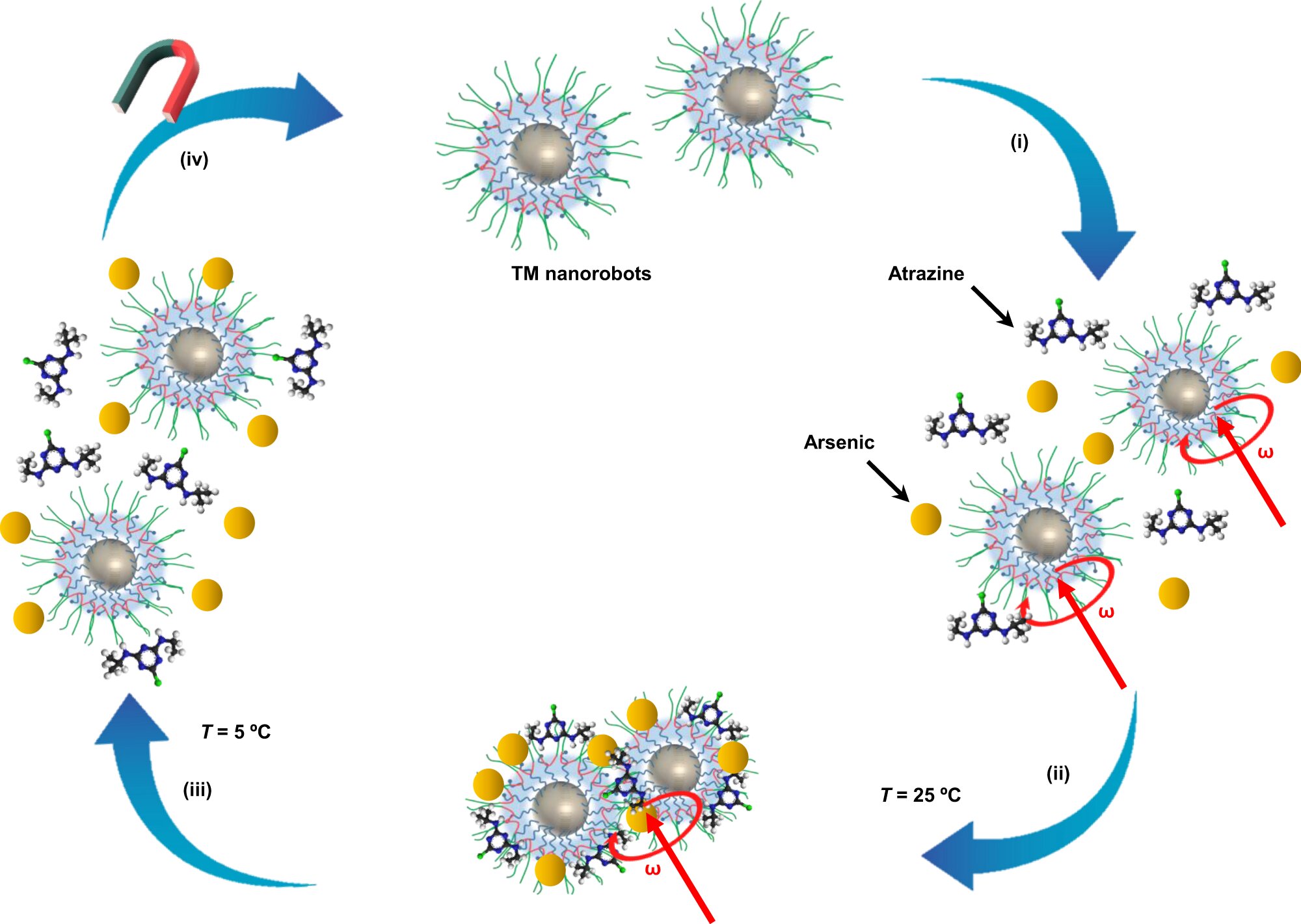Using nanorobots to help clean heavy metals from polluted water
Date: 4.3.2022
Prior research has shown that heavy metals make their way into the water table through landfill leakage, mining operations and industrial dumping. Heavy metals must be removed from water sources, and current methods call for complicated multi-step procedures to remove them.
 In this new effort, the researchers report a possible alternative – nanorobots. An international team of researchers has developed nanorobots capable of removing heavy metals from polluted water.
In this new effort, the researchers report a possible alternative – nanorobots. An international team of researchers has developed nanorobots capable of removing heavy metals from polluted water.
The researchers developed thermosensitive magnetic nanorobots capable of bonding with heavy metals under certain circumstances and releasing them under others. The nanorobots (each just 200 nanometers wide) were made using a pluronic tri-block copolymer (PTBC) as an attractant and iron oxide to allow for control via magnetic fields. The copolymer is a temperature-sensitive PTBC.
When placed in cool water, the material bonds with heavy metals. When placed in warm water, the bonds relaxed, allowing the metals to separate from the material. In practice, this meant that a group of the nanorobots could be placed into a sample of cool water where they would disperse naturally and bond with any heavy metals they encountered.
Then, the nanorobots could be corralled using a magnetic field to a separate site where the water could be heated, releasing the metals. Notably, this arrangement allows the nanorobots to be reused.























